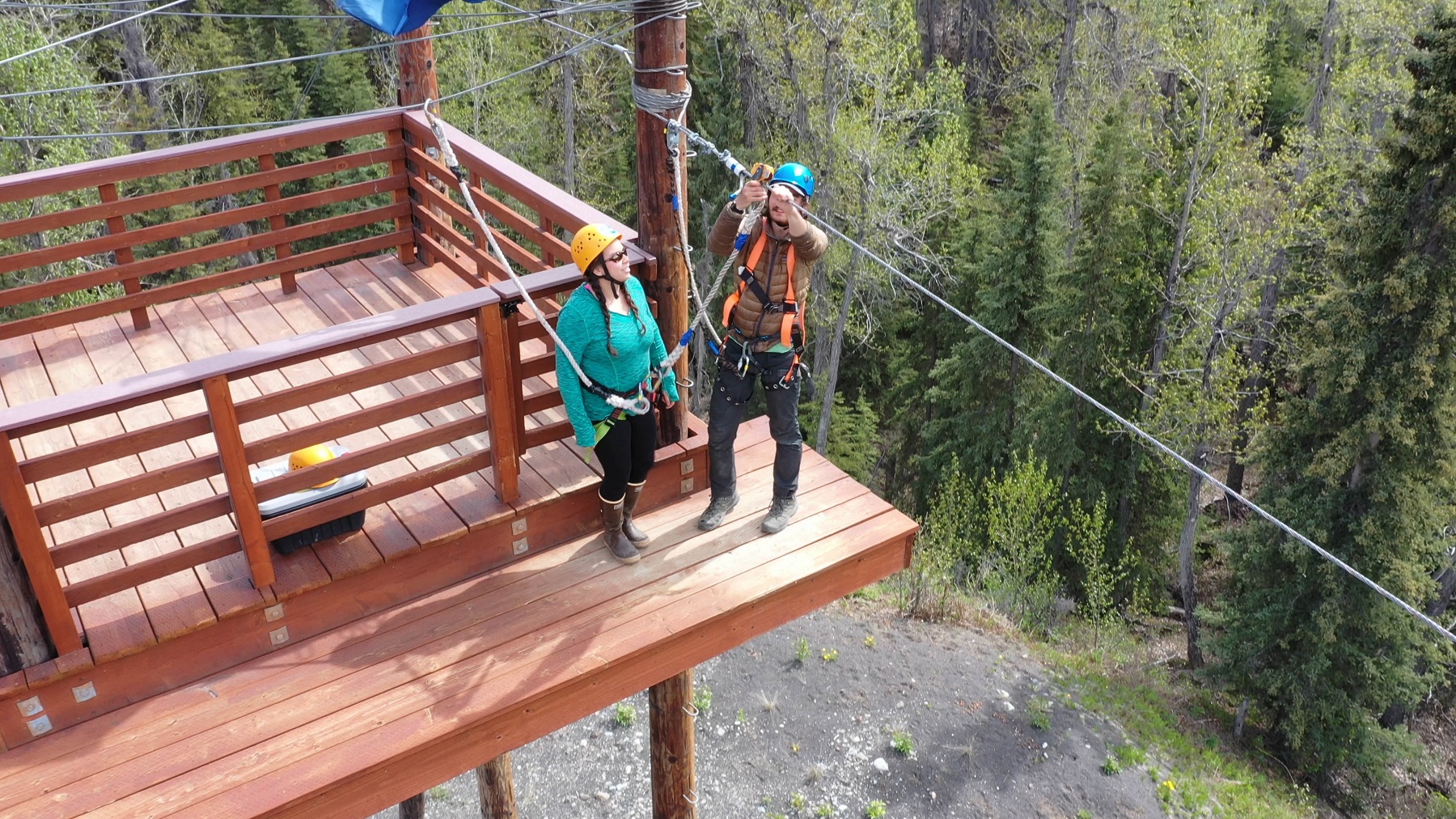The Science Behind Ziplines

The Science Behind Ziplines
Ziplines are an exciting experience for thrill-seeking adventures, and are also a speedy, efficient means of travel between two points on a downward slope. But how exactly do ziplines do their job? Let’s take a look at the science behind ziplines.
Gravity
Gravity is the essential force in bringing you down the zipline. Without it, when you step off that platform, you wouldn’t be going anywhere. Gravity on a zipline doesn’t quite have the same effect as it would if you stepped off without a line. Gravity always pulls directly toward the ground, so when you’re falling on an incline, your acceleration due to gravity decreases. This explains why you will travel faster on steeper lines.
Friction

Gravity takes hold of this zipliner and increases their speed.
Friction is one of the forces that slows you down on the zipline. When ziplining, you travel down the line on a piece of gear called a trolley. This trolley has wheels on it that roll down the metal line, because rolling creates less friction than sliding. Without the trolley, you likely would get stuck halfway down the line. And, because the force of friction is greater than the force of gravity.
On some ziplines, stopping at the bottom is also controlled by friction. The riders are given gloves so that as they near the end of the line, they can slide their hand on the line to slow themselves down. The force between the hand and the line is an example of friction at work.
Air Resistance
Air resistance is another force working to slow you down on the zipline. A lot of factors go into the air resistance that you experience while traveling down the line. Check out this science behind ziplines.
air resistance = (constant k)(velocity)2 =(air density)(drag)(area)2(velocity)2

As high pressure systems work up valleys this increases air resistance for zipliners
This complicated equation can be explained by three things: the surface area of the traveling object, the speed of that object on the line, and some constants including air density and drag. The faster an object is traveling, the more air resistance it will experience. When the air resistance reaches a certain point, that is when the object reaches terminal velocity: the maximum speed of travel for that object in those conditions. Air resistance is always acting against the direction of travel, so you may notice your speed leveling out as you get further down the line.
So why does a heavier person go down faster?
The key difference in the science behind zipline travel for a heavier person compared to a lighter one involves air resistance and terminal velocity. You may notice that the air resistance equation above says nothing about the mass of the traveling object. The air resistance experienced does not depend on how heavy the object is. An object’s terminal velocity does.
Terminal velocity is achieved when the force of the air resistance is equal to the force. This is due to gravity. F=mg is force due to gravity. M is the mass of the object, and g is the acceleration due to gravity, which is essentially a constant on a fixed line.
So as an object gets heavier, its force due to gravity, increases. This means that the object is able to go faster before reaching terminal velocity and leveling out. The science of ziplining is best understood by experience. So get out there and feel the force for yourself.
Written By: Michelle Patten
